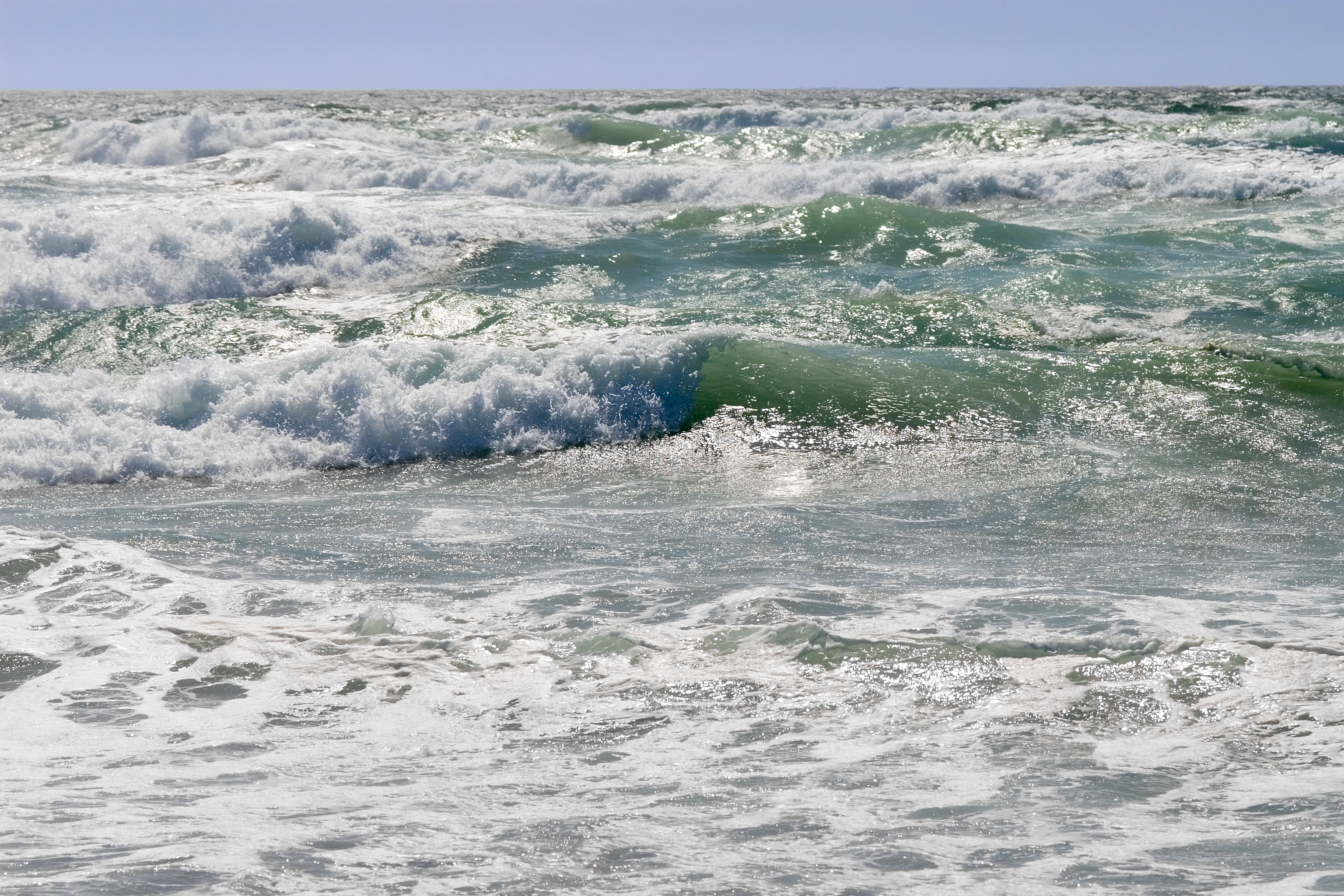|
Natural Heritage
Natural heritage refers to the sum total of the elements of biodiversity, includes flora and fauna, ecosystems and geological structures. It forms part of our natural resources. Definition Definitions: * Natural heritage refers to natural features, geological and physiographical formations and delineated areas that constitute the habitat of threatened species of animals and plants and natural sites of value from the point of view of science, conservation or natural beauty. * Heritage is that which is ''inherited'' from past generations, maintained in the present, and bestowed to future generations. The term "natural heritage", derived from "natural inheritance", pre-dates the term "biodiversity". It is a less scientific term and more easily comprehended in some ways by the wider audience interested in conservation. The term was used in this context in the US when Jimmy Carter set up the Georgia Heritage Trust while he was governor of Georgia; Carter's trust ... [...More Info...] [...Related Items...] OR: [Wikipedia] [Google] [Baidu] |
Natural Resources
Natural resources are resources that are drawn from nature and used with few modifications. This includes the sources of valued characteristics such as commercial and industrial use, aesthetic value, scientific interest, and cultural value. On Earth, it includes sunlight, atmosphere, water, land, all minerals along with all vegetation, and wildlife. Natural resources are part of humanity's natural heritage or protected in nature reserves. Particular areas (such as the rainforest in Fatu-Hiva) often feature biodiversity and geodiversity in their ecosystems. Natural resources may be classified in different ways. Natural resources are materials and components (something that can be used) found within the environment. Every man-made product is composed of natural resources (at its fundamental level). A natural resource may exist as a separate entity such as freshwater, air, or any living organism such as a fish, or it may be transformed by extractivist industries into ... [...More Info...] [...Related Items...] OR: [Wikipedia] [Google] [Baidu] |
World Heritage Committee
The World Heritage Committee is a committee of the United Nations Educational, Scientific and Cultural Organization that selects the sites to be listed as UNESCO World Heritage Sites, including the World Heritage List and the List of World Heritage in Danger, defines the use of the World Heritage Fund and allocates financial assistance upon requests from States Parties. It comprises representatives from 21 state parties that are elected by the General Assembly of States Parties for a four-year term. These parties vote on decisions and proposals related to the World Heritage Convention and World Heritage List. According to the World Heritage Convention, a committee member's term of office is six years. However many States Parties choose to voluntarily limit their term to four years, in order to give other States Parties an opportunity to serve. All members elected at the 15th General Assembly (2005) voluntarily chose to reduce their term of office from six to four years. D ... [...More Info...] [...Related Items...] OR: [Wikipedia] [Google] [Baidu] |
Biodiversity
Biodiversity is the variability of life, life on Earth. It can be measured on various levels. There is for example genetic variability, species diversity, ecosystem diversity and Phylogenetics, phylogenetic diversity. Diversity is not distributed evenly on Earth. It is greater in the tropics as a result of the warm climate and high primary productivity in the region near the equator. Tropical forest ecosystems cover less than one-fifth of Earth's terrestrial area and contain about 50% of the world's species. There are latitudinal gradients in species diversity for both marine and terrestrial taxa. Since Abiogenesis, life began on Earth, six major mass extinctions and several minor events have led to large and sudden drops in biodiversity. The Phanerozoic aeon (the last 540 million years) marked a rapid growth in biodiversity via the Cambrian explosion. In this period, the majority of Multicellular organism, multicellular Phylum, phyla first appeared. The next 400 mil ... [...More Info...] [...Related Items...] OR: [Wikipedia] [Google] [Baidu] |
Cultural Heritage
Cultural heritage is the heritage of tangible and intangible heritage assets of a group or society that is inherited from past generations. Not all heritages of past generations are "heritage"; rather, heritage is a product of selection by society. Cultural heritage includes cultural property, tangible culture (such as buildings, monuments, landscapes, archive materials, books, works of art, and artifacts), intangible heritage, intangible culture (such as folklore, traditions, language, and knowledge), and natural heritage (including culturally significant landscapes, and biodiversity).Ann Marie Sullivan, Cultural Heritage & New Media: A Future for the Past, 15 J. MARSHALL REV. INTELL. PROP. L. 604 (2016) https://repository.jmls.edu/cgi/viewcontent.cgi?article=1392&context=ripl The term is often used in connection with issues relating to the protection of Indigenous intellectual property. The deliberate action of keeping cultural heritage from the present for the future is known ... [...More Info...] [...Related Items...] OR: [Wikipedia] [Google] [Baidu] |
Natural Resources
Natural resources are resources that are drawn from nature and used with few modifications. This includes the sources of valued characteristics such as commercial and industrial use, aesthetic value, scientific interest, and cultural value. On Earth, it includes sunlight, atmosphere, water, land, all minerals along with all vegetation, and wildlife. Natural resources are part of humanity's natural heritage or protected in nature reserves. Particular areas (such as the rainforest in Fatu-Hiva) often feature biodiversity and geodiversity in their ecosystems. Natural resources may be classified in different ways. Natural resources are materials and components (something that can be used) found within the environment. Every man-made product is composed of natural resources (at its fundamental level). A natural resource may exist as a separate entity such as freshwater, air, or any living organism such as a fish, or it may be transformed by extractivist industries into ... [...More Info...] [...Related Items...] OR: [Wikipedia] [Google] [Baidu] |
Geoheritage
Geoheritage (a blend of ''geological'' and ''heritage'') is the geological aspect of natural and cultural heritage. A geosite is a particular geological heritage asset. It is a heritage category comparable to other forms of natural heritage, such as biodiversity. History of the concept The first reference to geoheritage as such was at a 1993 conference held in the UK, the Malvern International Conference on Geological and Landscape Conservation. The term geological heritage was first mentioned at the First International Symposium on the Conservation of our Geological Heritage at Digne, France in 1991. The matter is further discussed in 2002 by Sharples. Conceptually, geoheritage derives from various writings of Busby et al. 2001 and Hallam 1989). In Sharples 1995 the original concept of geoheritage further developed to include the protection of dynamic geological processes and geodiversity. In Sadry 2021 the concept of geoheritage have more developed to include the vertical d ... [...More Info...] [...Related Items...] OR: [Wikipedia] [Google] [Baidu] |
World Heritage Marine Programme
The World Heritage Committee is a committee of the United Nations Educational, Scientific and Cultural Organization that selects the sites to be listed as UNESCO World Heritage Sites, including the World Heritage List and the List of World Heritage in Danger, defines the use of the World Heritage Fund and allocates financial assistance upon requests from States Parties. It comprises representatives from 21 state parties that are elected by the General Assembly of States Parties for a four-year term. These parties vote on decisions and proposals related to the World Heritage Convention and World Heritage List. According to the World Heritage Convention, a committee member's term of office is six years. However many States Parties choose to voluntarily limit their term to four years, in order to give other States Parties an opportunity to serve. All members elected at the 15th General Assembly (2005) voluntarily chose to reduce their term of office from six to four years. Del ... [...More Info...] [...Related Items...] OR: [Wikipedia] [Google] [Baidu] |
Bioprospecting
Bioprospecting (also known as biodiversity prospecting) is the exploration of natural sources for small molecules, macromolecules and biochemical and genetic information that could be developed into commercialization, commercially valuable products for the agricultural, aquaculture, bioremediation, cosmetics, nanotechnology, or pharmaceutical industries. In the pharmaceutical industry, for example, almost one third of all small-molecule drugs approved by the U.S. Food and Drug Administration (FDA) between 1981 and 2014 were either natural products or compounds derived from natural products. Terrestrial plants, fungi and Actinomycetota, actinobacteria have been the focus of many past bioprospecting programs, but interest is growing in less explored ecosystems (e.g. seas and oceans, caves and Polar regions of Earth, polar regions) and organisms (e.g. extremophiles, tropical corals and necrophages) as a means of identifying new molecules with novel Biological activity, biological ... [...More Info...] [...Related Items...] OR: [Wikipedia] [Google] [Baidu] |
Convention On Biological Diversity
The Convention on Biological Diversity (CBD), known informally as the Biodiversity Convention, is a multilateral treaty. The Convention has three main goals: the conservation of biological diversity (or biodiversity); the sustainable use of its components; and the fair and equitable sharing of benefits arising from genetic resources. Its objective is to develop national strategies for the conservation and sustainable use of biological diversity, and it is often seen as the key document regarding sustainable development. The Convention was opened for signature at the Earth Summit in Rio de Janeiro on 5 June 1992 and entered into force on 29 December 1993. The United States is the only UN member state which has not ratified the Convention. It has two supplementary agreements, the Cartagena Protocol and Nagoya Protocol. Cartagena Protocol on Biosafety, The Cartagena Protocol on Biosafety to the Convention on Biological Diversity is an international treaty governing the movements of ... [...More Info...] [...Related Items...] OR: [Wikipedia] [Google] [Baidu] |
Genetic Resources
Genetic resources are genetic material of actual or potential value, where genetic material means any material of plant, animal, microbial genetics, microbial or other origin containing functional units of heredity. Genetic resources is one of the three levels of biodiversity defined by the Convention on Biological Diversity in Rio, 1992. __NOTOC__ Examples *Animal genetic resources for food and agriculture *Forest genetic resources *Germplasm, genetic resources that are preserved for various purposes such as breeding, preservation, and research *Plant genetic resources *Genetic resources conservation and sustainable use See also *Cryoconservation of animal genetic resources, a strategy to preserve genetic resources cryogenically *Commission on Genetic Resources for Food and Agriculture, the only permanent intergovernmental body that addresses biological diversity for food and agriculture *International Treaty on Plant Genetic Resources for Food and Agriculture, an internationa ... [...More Info...] [...Related Items...] OR: [Wikipedia] [Google] [Baidu] |
Common Heritage Of Mankind
Common heritage of humanity (also termed the common heritage of mankind, common heritage of humankind or common heritage principle) is a principle of international law that holds the defined territorial areas and elements of humanity's common heritage (cultural heritage, cultural and natural heritage, natural) should be held in trust for future generations and be protected from exploitation by individual nation states or corporations. Origins In tracing the origins of the common heritage principle, it is important to distinguish its history as a term from its conceptual history. The common heritage principle was developed under different names, including common "heritage", common "property", and common "patrimony" of mankind. These terms have at times described different concepts; for instance, in 1813 the "property of mankind" might mean the arts and sciences, rather than items or areas. By the early 20th century, "common heritage" and similar terms usually referred to areas and t ... [...More Info...] [...Related Items...] OR: [Wikipedia] [Google] [Baidu] |



